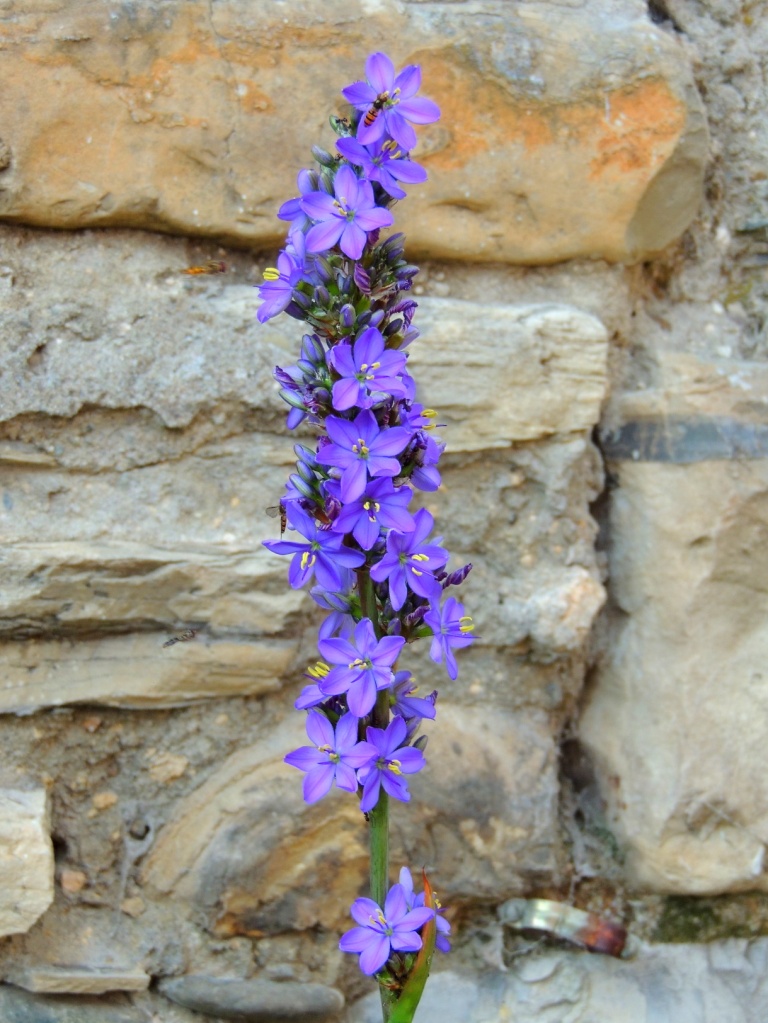
June started with the only flowerspike of Aristea major opening up to give us the shot of blue that always surprises, and giving the hoverflies a good morning snack. It can’t speak to me, but I know that the Aristea found the move unpleasant, and the wet January was not to it’s taste either. So, weekly liquid seaweed feeds seem to be cheering it up and normal growth of new leaves is resuming. It was a five year wait from sowing seed to the first flower, so I am really invested in it’s recovery.
I split this lovely yellowy-green Hakonechloa macra Naomi into five plants, which had orginally been two plants in a pot. This is a very obliging and beautiful Japanese grass, which is altogether more tolerant of sun and dryness than many sites would suggest. I think that what it needs to be super tough is to really develop the root mass to support the leaf growth, so if you have either planted it or split it, expect to keep it watered regularly for the first few months, but it will probably need very little extra water thereafter. I grew the golden variety in full sun with dry soil very successfully and one plant gradually spread to easily cover a metre over 10 years. So, of the original two plants, I now have four growing in the Barn Garden and the last piece in this lovely cracked pot.
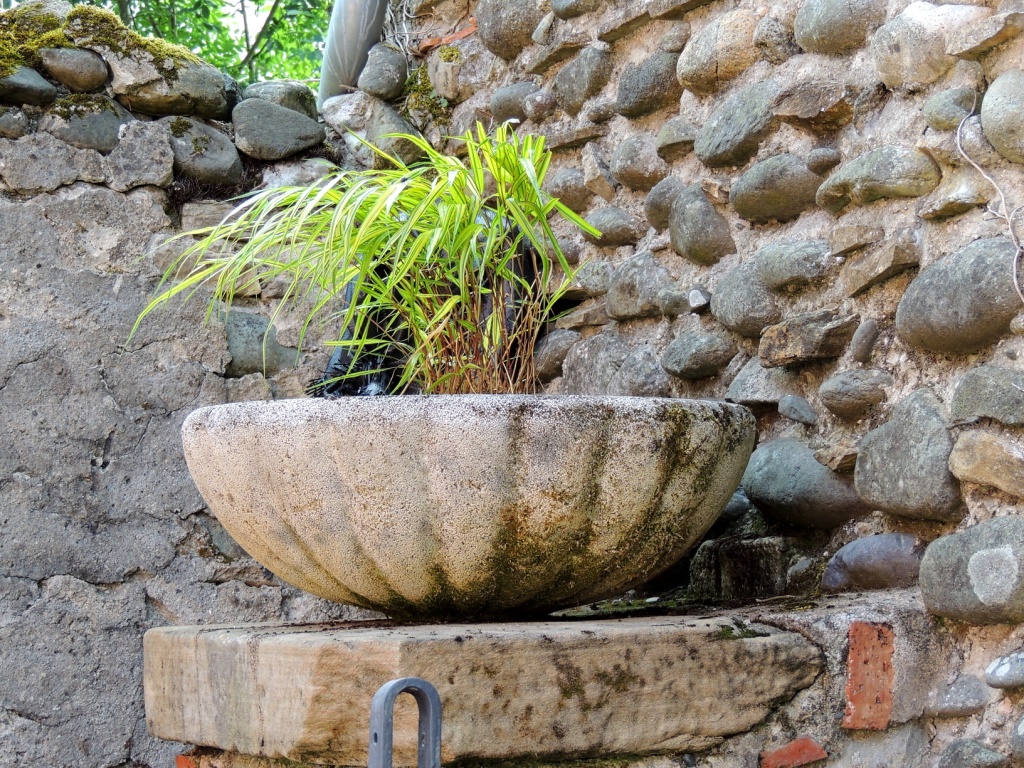
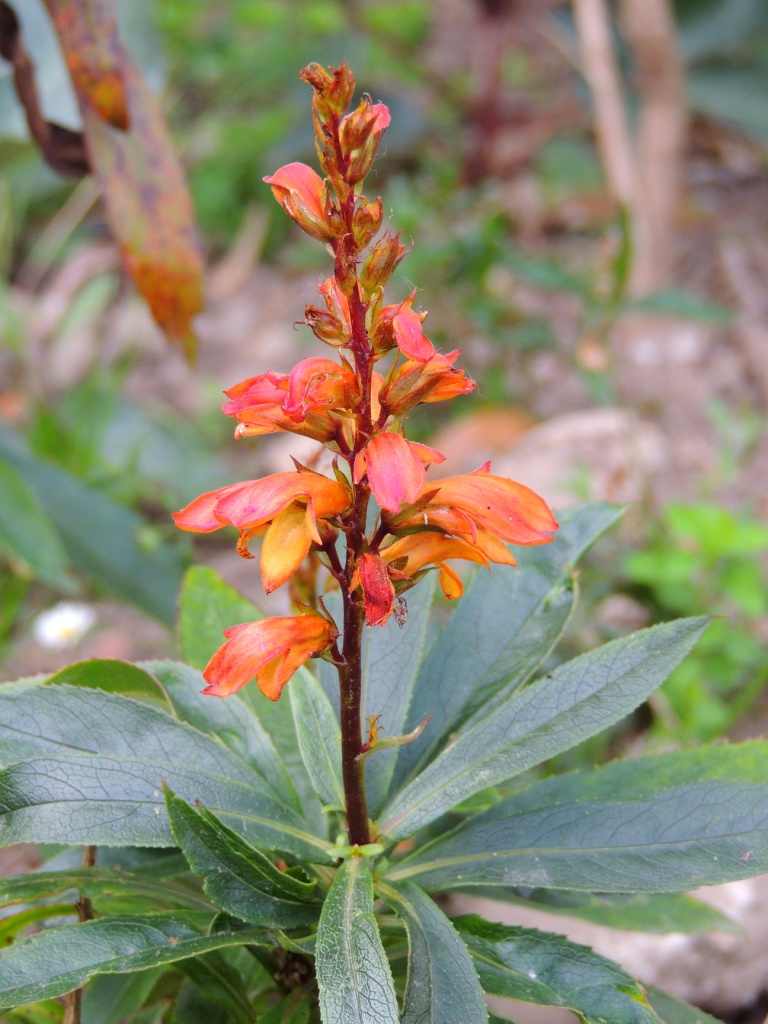
I have seriously sinned against this plant, Isoplexis canariensis, and despite my letting it freeze outside in the pot, it has valiantly clung on this Spring, and in the walled protection of the Barn Garden, I am risking it and have planted it out into the ground. I do, however, adore the colouring- the burnt orange of the flowers, and when happy, the slightly glossy dark green foliage is quite lovely. But I saw the near cousin, Isoplexis isabelliana ‘Bella’, offered this Spring and so have one in a pot in the courtyard. So far, so good, it came as a teeny plant and is now bushing up nicely and starting to flower with the same burnt orange colouring as the shrub. ‘Bella’ looks as though she will be shorter, just over a metre, and bushier than the Canariensis, which can get leggy, and it will need some help to get through a damp winter. But for orange lovers like me, it is otherwise not at all demanding.
Andy Sturgeon used Canariensis to really good effect in his Chelsea garden of 2016- his website has some great photos of the garden.
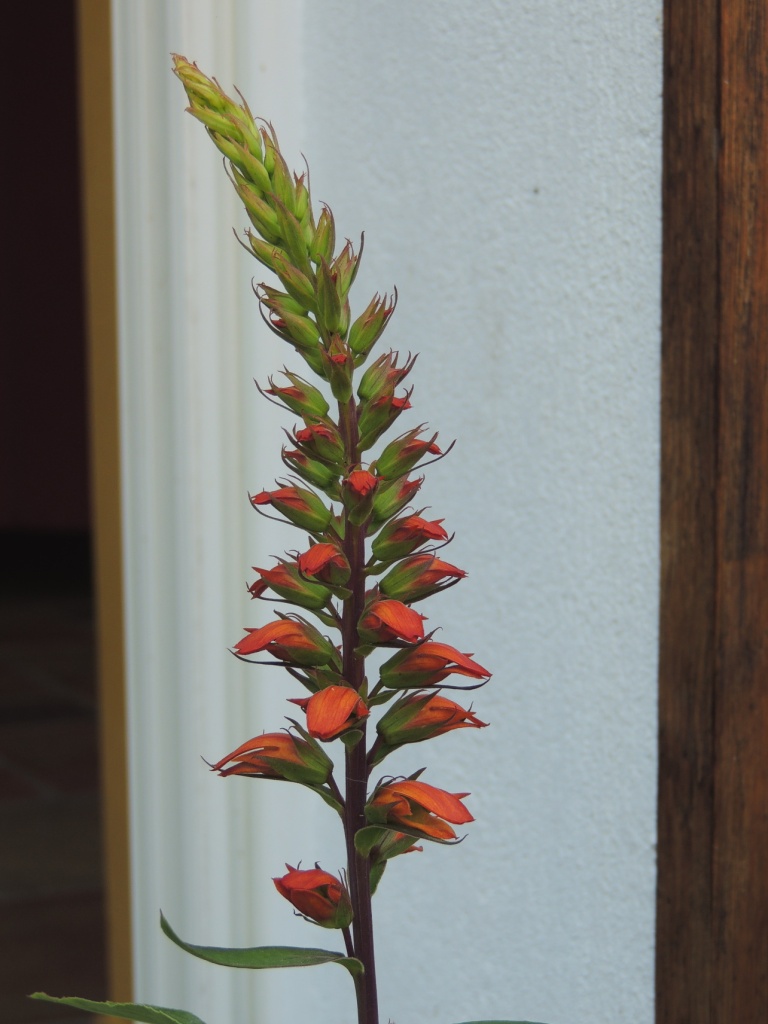
This is a really lovely Penstemon that I grew for the first time last summer, Penstemon ‘Russian River’. It starts off as a misty dark grape colour almost frosted with a light patina, then romps into full-on juicy dark blue/purple as the flowers open out. Unlike some, this Penstemon stands tall and erect from the off, even before flowering. Cuttings virtually take themselves, so buy one and then propagate to have sturdy young plants for next year.
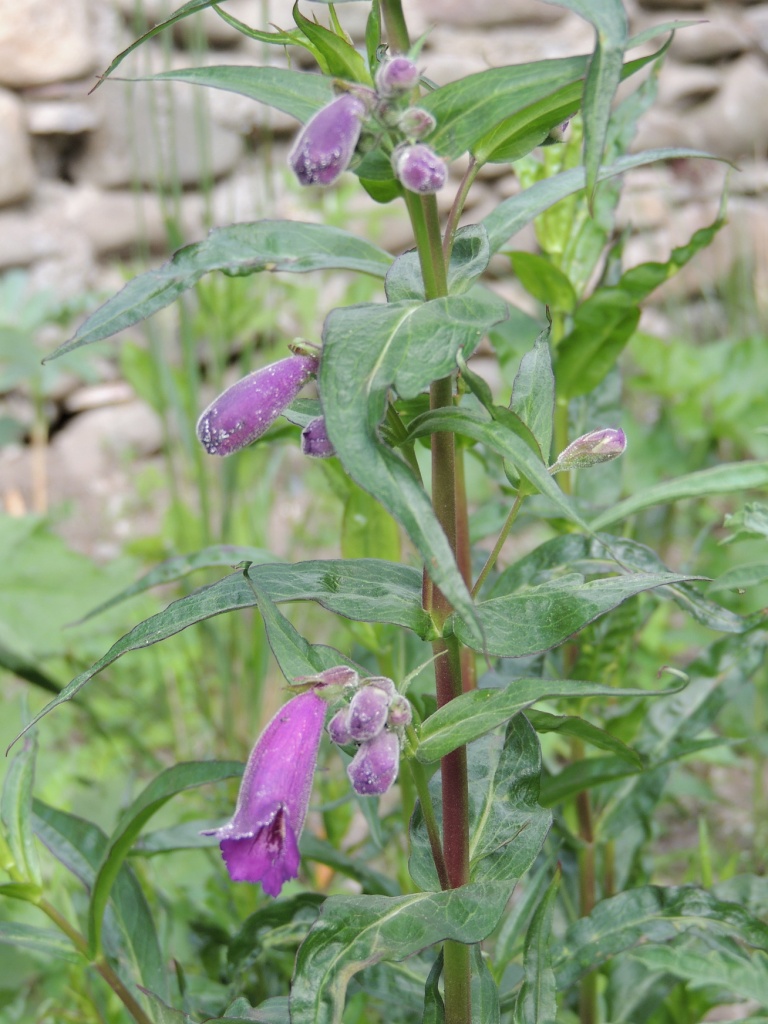
And in theory, I should love Digiplexis. But, I have come to the conclusion that they are probably more trouble than they are worth. They don’t reliably over-winter and can be quite moody till quite late in the year, so despite the fact that the colours are really good, and the plant is bushy rather than being a very tall single spike, I won’t be rushing to find any more. Graham Rice is pretty cutting about the name alone, never mind the actual plant.
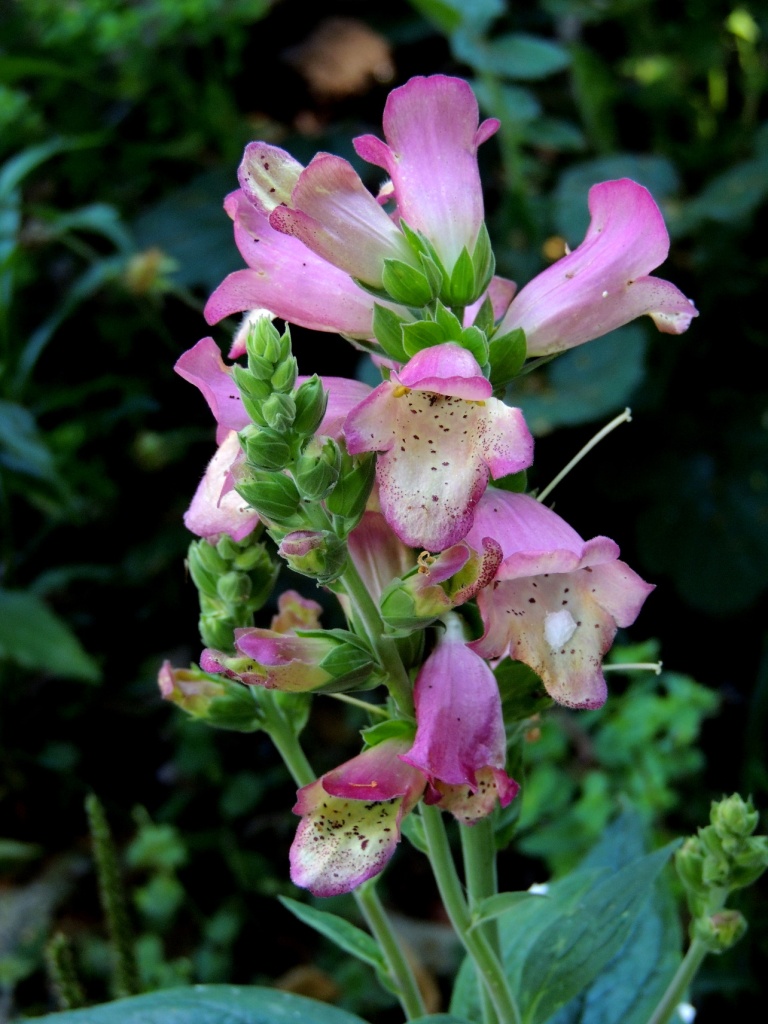
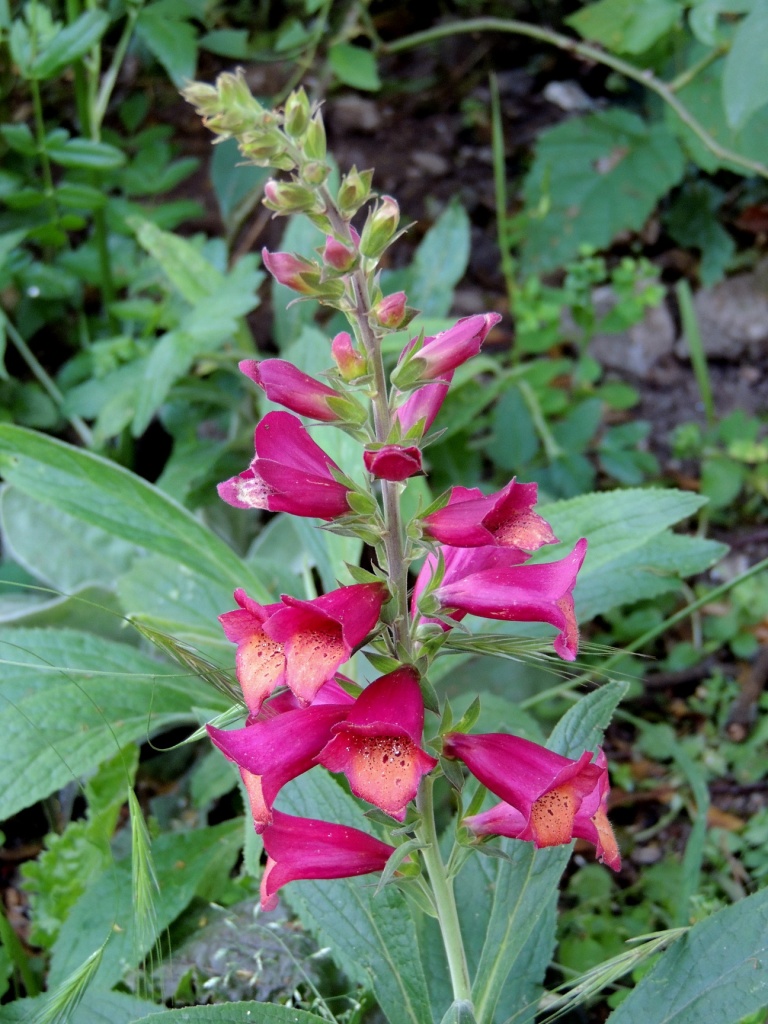
I am very proud of my seed-grown Paulownia tomentosa though. For a start, a good friend now no longer with us, gave me the seed, and then 2 years later, here we are with thriving young plants. I am going to do the coppicing-thing, as no way can I handle a full-size tree, but 2m tall and dinner plate sized leaves sounds good to me. Next to it, is one of the divided ‘Naomi’ plants, which is looking a little uncertain in it’s new position, but it will come through this phase. I am confident.
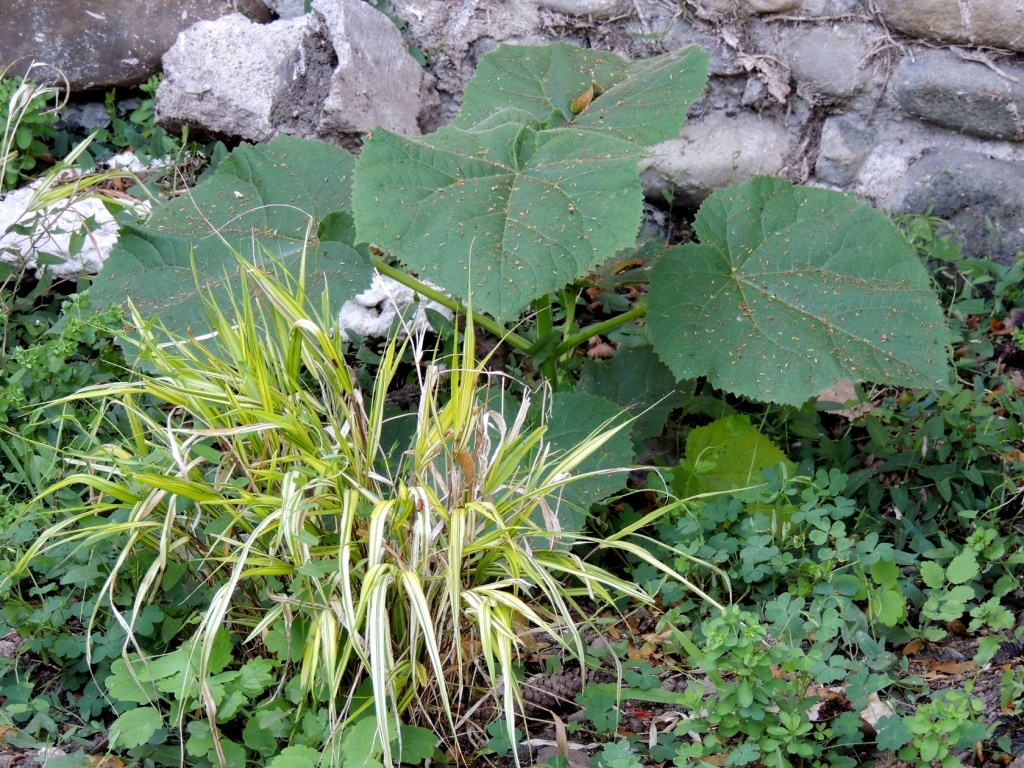
Another remarkable survivor is Rosa ‘Lawrence Johnston’. Saved last year from a very poor choice of planting spot, this tough rose is making a great come-back, although I do wonder about the naming, as my rose looks very different from others photographed on sites. It is also pale apricot rather than yellow really, and more double than semi, but, sigh, I love it anyway.
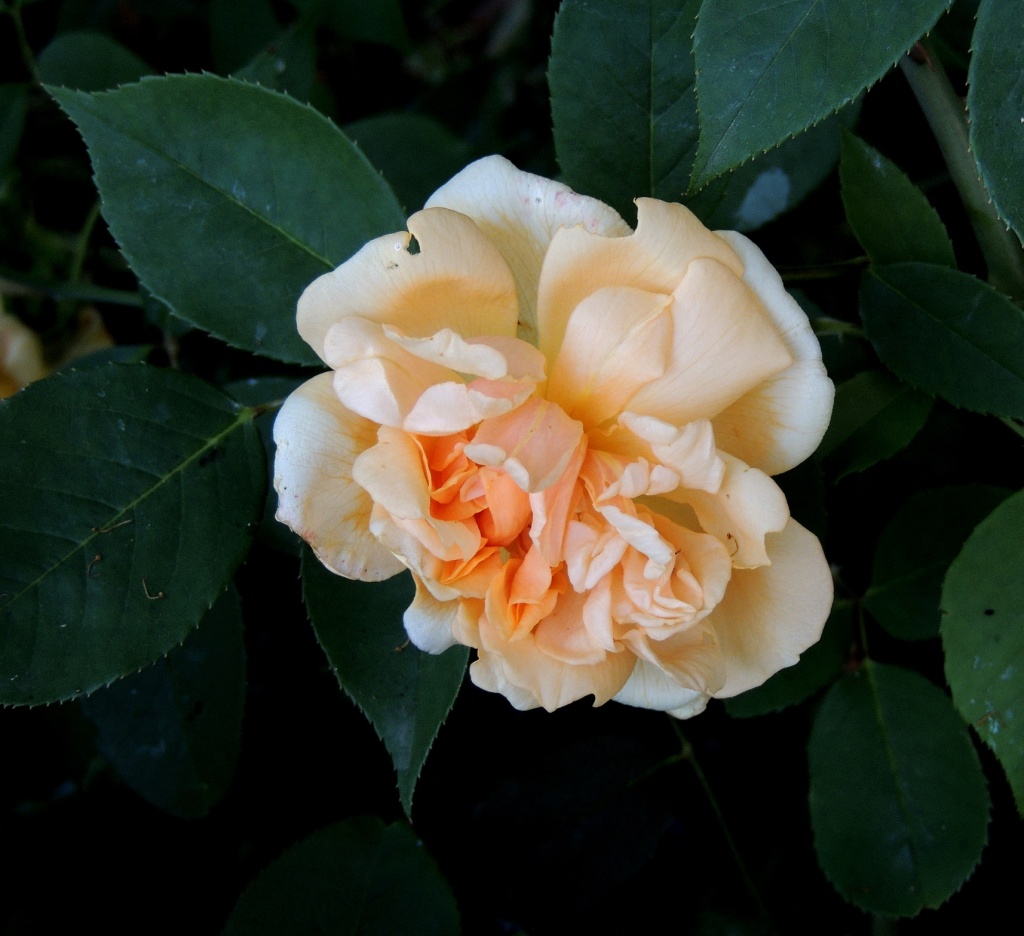
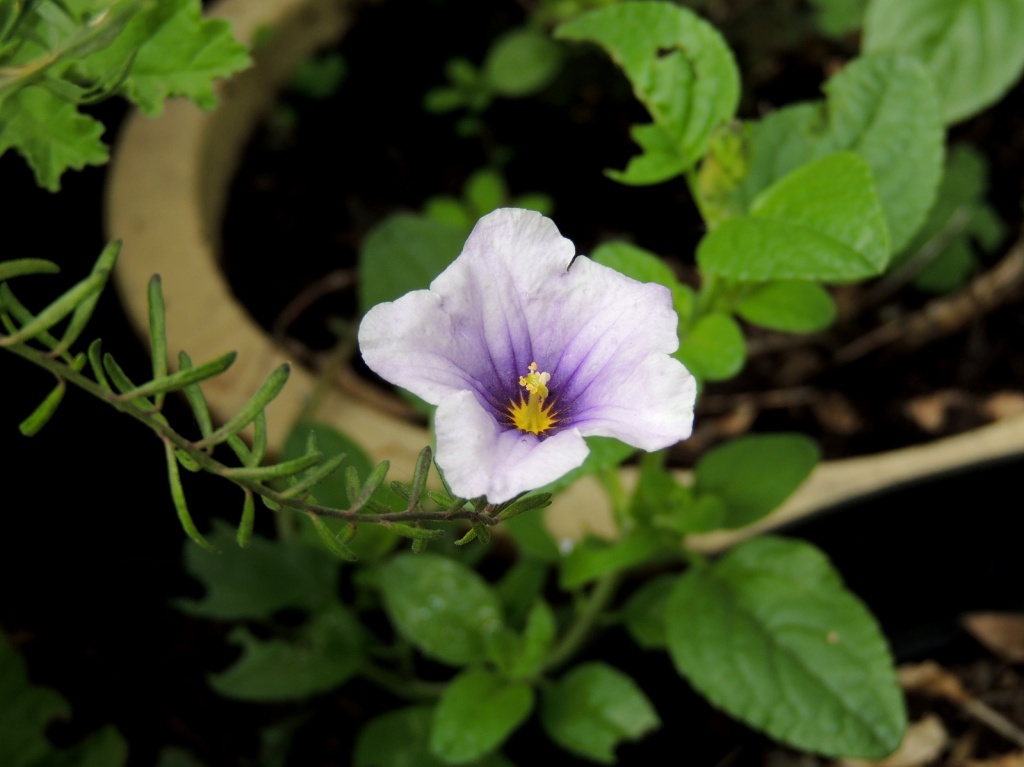
Nierembergia scoparia is a strange, loose, wiry plant which I grow in a pot in amongst other plants, so that the flowers emerge as if by magic through the undergrowth- well, that’s the theory. But the flowers are really pretty and it is far tougher than it looks, so it may go in the ground next year in a sunny, sheltered spot.
So this will be the ‘pond’- a rather grand old bassin for watering cattle will get a new life. It may need a liner as there is a slight fissure seeping water high on the side, but we are experimenting to see if this is really required. This time, a submerged pump will gently agitate the water, no Versailles effects for us, and I am thinking papyrus, and other tall stuff at one end, with a small lily, Nymphaea ‘Paul Hariot’ providing coverage and flowers.

And here’s a surprise- to me at least, a small scale Alchemilla epipsila, which will hopefully be as pretty and long lived as the bigger Mollis, but less invasive in a small garden. It is the most adorable thing when droplets of dew or rain sparkle on the serrated edges of the leaves.
